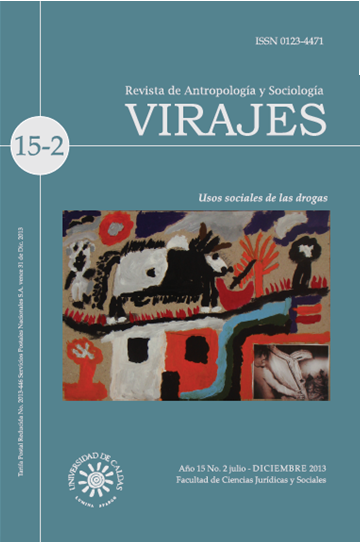Authors
Abstract
This article seeks to reflect upon the myths that guide the academic discussion about “communication” in the West since modernity taking as a referent the mythology that directs the actions of “communication” in the so-called native communities of Abya Yala. Regarding Western myths the concept of “man” (transmitter /receiver) that lies on the classical theories of “communication”, as well as on the predetermined character of human action, are delved. From this first discussion, it is concluded that the general basis upon which the character of this activity is assumed is the existence of a “psychic unity” of which it is presumed that the ideal of “communication” is one of symmetry between those who have the leading role in this activity. This view, in a second part, is contrasted with position vision on which indigenous people consider “communication”.
Keywords
References
________. (2010b). “Cumbre Continental de Comunicación Indígena. Los pueblos reclaman una comunicación más política estratégica”. En: ALAI, América Latina en Movimiento. http://alainet.org/active/42002&lang=es [Septiembre 8 de 2012].
ARENDT, Hannah. (1993). La condición humana. Barcelona: Paidós.
BECERRA, Eudocio y JAMES, Ariel José. (2003). El Komuitajagaϊ jϊyakϊ. Poema Uitoto de la creación. Bogotá: Asterión.
CORVALÁN, María Eugenia. (1999). El pensamiento indígena en Europa. Bogotá: Planeta.
DECLARACIÓN DE LOS PUEBLOS INDÍGENAS ANTE LA CUMBRE MUNDIAL DE LA SOCIEDAD DE LA INFORMACIÓN. Caucus Indígena de Sur, Centro América y México, Ginebra, 10 de diciembre de 2003.
FOLEY, Douglas E. (2004). “El indígena silencioso como una producción cultural”. En: Cuadernos de Antropología Social, No. 19. http://www.scielo.org.ar/pdf/cas/n19/n19a02.pdf
GALEANO, Eduardo. (1996). Las venas abiertas de América Latina. Madrid: Siglo XXI.
PRENSA INDÍGENA CHASKINAYRAMPI. (2009). Documento final de conclusiones. V Taller Internacional de Comunicación Indígena. “Desafío Tecnológico y Marco Legal para una Comunicación Plurinacional”, Quito y Otavalo, 14 al 20 de septiembre de 2009. En: http://movimientos.org/show_text.php3?key=15748 [Julio 29 de 2012].
RAMÍREZ CASTRO, Juana. (2012). La concepción del hombre en las teorías de la comunicación. XI Congreso ALAIC 2012. La investigación en comunicación en América Latina: interdisciplinar, pensamiento crítico y compromiso social. Montevideo. Universidad de la República.
SÁNCHEZ, Juan Guillermo. (2009). “El sueño (nikai) en el mito de la creación Uitoto”. En: ACOSTA, Carmen, ALZATE, Carolina, FIGUEROA, Cristo y otros (eds.). Literatura, prácticas críticas y transformación cultural. Bogotá: Pontificia Universidad Javeriana. Volumen 2. http://juanlunes.blogspot.com/2010/04/el-sueno-nikai-en-el-mito-decreacion.html
SODRÉ, Muniz (1990). Seminario Epistemología y Comunicación Masiva. UCDAL. 23 al 26 de julio.
VERNANT, J.P. (1979). Los orígenes del pensamiento griego. Buenos Aires: Eudeba.

 PDF (Español)
PDF (Español)
 FLIP
FLIP














